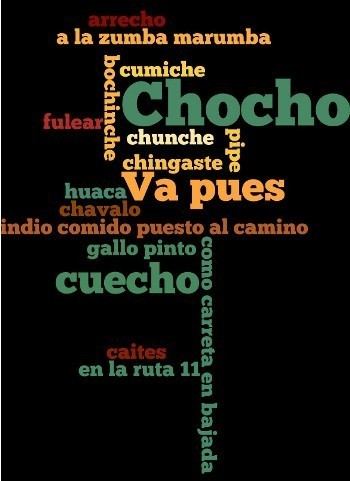 | ||
Dulces y juguetes tradicionales para la gorra
Nicaraguan Spanish (Spanish: Español nicaragüense) is geographically defined as the form of Spanish spoken in Nicaragua. Affectionately, Nicaraguan Spanish is often called Nicañol.
Contents
- Dulces y juguetes tradicionales para la gorra
- Origins
- Pronunciation
- Vos
- Conjugations with the vos pronoun
- Affirmative Imperative
- Usted
- T
- Vocabulary
- References
The Spanish dialect in Nicaragua shares many similarities with that of its neighbors in the region, but it also has some stark differences in pronunciation and usage.
Nicaragua has the highest frequency, among Central American countries, of the use of voseo—use of the pronoun vos and its verb forms for the familiar second-person singular ("you"), in place of the tú of Standard Spanish. In this regard it is similar to the usage of Argentina and Uruguay in the Río de la Plata region of South America. Vos is used frequently in colloquial and familiar settings, but Nicaraguans also understand tuteo. The use of "vos" can be heard in television programs and can be seen in written form in publications.
In the North Caribbean Coast Autonomous Region and the South Caribbean Coast Autonomous Region, language and pronunciation is strongly influenced by native and creole dialects such as Miskito, Rama, Sumo, Miskito Coastal Creole, Jamaican Patois, Garifuna and Rama Cay Creole.
Origins
The Nicaraguan accent, like most New World Spanish, dates back to the 16th century in Andalusia. It shares later developments of Andalusian Spanish with that of Cuba, the Dominican Republic and the Caribbean/coastal regions of Venezuela, Colombia, Panama, Honduras and Puerto Rico. Nicaragua's relative isolation from Spain, however, and, to an extent, from other nations, fostered the development of the Nicaraguan accent, which did not change in the same ways that the Andalusian, Canarian, or other Spanish-American accents did.
During its history, Nicaraguan Spanish has acquired many indigenous influences and several distinguishing characteristics. Until the 19th century, a hybrid form of Nahuat-Spanish was the common language of Nicaragua. Today, Nahuat, Mangue and Mayan words, along with their respective syntax, can be found in everyday speech. Also, as Nicaragua was part of First Mexican Empire, there are a number of words widely used in Nicaragua which have Nahuatl, Mayan or other native origins, in particular names for flora, fauna and toponyms.
Pronunciation
Notable characteristics of Nicaraguan phonology include the following:
Vos
Vos is the predominant second person singular pronoun used by most speakers in familiar or informal contexts to address people in the same age group. Vos is also used by adults in addressing children or juveniles, but children address adults with usted.
Conjugations with the vos pronoun
Nicaraguan voseo is both pronominal and verbal; that is, speakers use the pronoun vos and the characteristic final-stressed verb forms. See Voseo
Affirmative Imperative
See Voseo Affirmative Imperative
The affirmative imperative in Nicaraguan voseo—like that of Rioplatense Spanish—places stress on the last syllable. For example, ¡Ven acá! or ¡Ven aquí! becomes ¡Vení!
Usted
Usted is the formal second person singular pronoun in Nicaraguan Spanish, as in almost all modern varieties of Spanish. Usted is used in addressing foreigners formally and in business settings. In contrast to neighboring Costa Rica, Nicaraguans are more inclined to address a casual acquaintance as vos, rather than usted.
Tú
Tú is hardly used in Nicaraguan Spanish, except in addressing foreigners familiarly, in speech or in writing. Due in part to the influence of Mexican, Colombian, and Venezuelan television programming, Nicaraguans are familiar with tuteo, and some television viewers, especially children, have begun to use it in limited contexts.
Vocabulary
A number of words widely used in Nicaragua which have Nahuatl, Mayan or other native origins, in particular names for flora, fauna and toponyms. Some of these words are used in most, or all, Spanish-speaking countries, like chocolate and aguacate ("avocado"), and some are only used in Mexico and Nicaragua. The latter include guajolote "turkey" < Nahuatl huaxōlōtl [waˈʃoːloːt͡ɬ] (although pavo is also used, as in other Spanish-speaking countries); papalote "kite" < Nahuatl pāpālōtl [paːˈpaːloːt͡ɬ] "butterfly"; and jitomate "tomato" < Nahuatl xītomatl [ʃiːˈtomat͡ɬ]. For a more complete list see List of Spanish words of Nahuatl origin. Certain words that are present in Nicaraguan Spanish may not be immediately recognizable to non-Nicaraguans:
